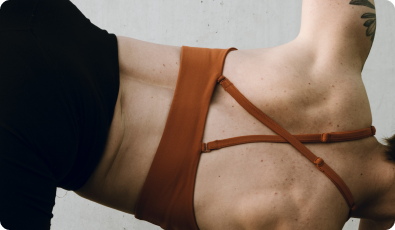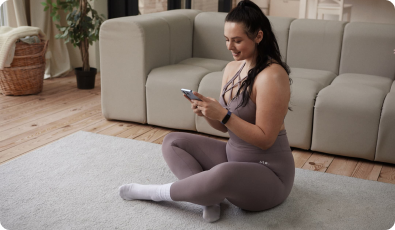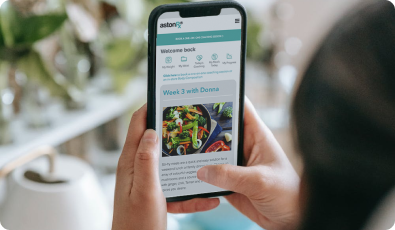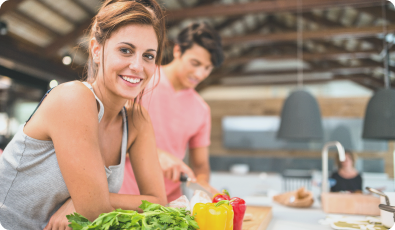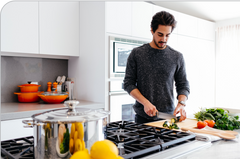You’ve stopped munching on white bread, sugary snacks and filling up on pasta, rice and potatoes. Instead, your fridge is bursting with greens, the meat tray is stacked and there are healthy oils in the pantry.
But then you start filling up on those healthier options because you think it’s permitted. Surely you can’t eat too much lettuce.
"These are good for me," you cry. "You can’t possibly eat too many sticks of celery.’"
Can you though?
Too much of anything is never great and, in my experience, if you’re eating too much of something it’s because you’re eating it too quickly. If you just slow down, enjoy your food and give your body time to savour it, you won’t need as much food.
SLOW IT DOWN
Eating quickly makes food something you just have to get done so you can move onto the next task you have to complete.
Breakfast – tick. Lunch – tick. Dinner – tick.
I have a rule in my house to never eat standing up because it’s mindless eating. Food deserves to be savoured and enjoyed. Our other rule is that we take 20 to 30 minutes to finish a meal. I know that’s causing gasps as you’re reading, because most people only take 2 minutes to eat a meal. Consider though that your food has to travel 6.7m through your digestive tract to get to your stomach which tells your brain you’ve eaten enough, it makes sense to give food time to take that journey.
If you eat really quickly, you’ll likely need more food 30 minutes later, thinking you’re hungry but you haven’t given your body time to digest what it already has before piling more food into your system. Even the healthiest food possible can interfere with proper digestion in these circumstances.
KNOW YOUR LIMITS
No matter who you are, portion sizes are fairly standard. A protein portion should be about the size of the palm of your hand. It’s a tried and true measure that still works well. And, no, that doesn’t mean that it can be the size of your palm but 10 inches thick as well!
Vegetables or plant food should amount to about two cups and, aside from those measures, I always advise people to buy smaller plates because perspective is everything in appetite. It begins with sight, goes to the brain and hits the stomach.
If you exercise more intensively and frequently, you can eat more protein but that still doesn’t mean you should have more protein than your body can use and it doesn’t mean your muscles repair better or that you build more muscle by eating more protein. They are all just excuses and myths to seduce us into eating more and particularly snacking more.
SNACKING WOES
I still hear my mother’s wise words that were frequently spoken during my childhood. "You can’t eat anything now because you won’t have room for dinner." Or "If I give you something to eat now it will spoil your dinner." I also recall very few obese children in my childhood. There certainly weren’t a quarter of my classmates who were obese when, sadly that is the national average in 2021. It used to be such a rarity to see an overweight child.
We just didn’t snack. We were too busy playing outside or occupied in countless ways that had absolutely nothing to do with food.
Now, parents collect their children from school with snacks in the car in case their children don’t make it home without starving or complaining of hunger. I know some parents who keep food just inside the front door to appease distraught children as soon as they arrive home and can’t even wait until they get to the kitchen to start eating.
FOOD PERSPECTIVE
Food is too often used to solve other issues and mask other problems. It is the solution of choice when children are crying or overwrought before other causes of behavioural problems are even considered.
It’s understandable how this has happened when the power of advertising has created a belief system that convinces people they need to be eating every five minutes. Lunchboxes are filled with snacks while adults take multiple coffee breaks a day without realising they are just consuming a great big snack that is likely to be full of sugar and/or syrup. They tell their colleagues they’re just going to grab a coffee, as if it’s easy, quick and after all it’s just a light drink but so many of the coffee varieties now are the equivalent energy source of a giant meal.
One of the challenges people face when they start the Aston RX program is that they have to stop drinking all day long. Water, Yes. Please drink water but just because a drink is green, it’s not necessarily healthy and will play havoc with your blood sugar if consumed in between meals.
Even if a whole food has been juiced, once you grind fibre into microscopic particles, it doesn’t feed the gut flora, slow insulin release or help you feel satisfied in the way a meal does which explains why people tend to quickly drink a fresh juice with lunch and get a fast rush of insulin. It’s being consumed more quickly than if all of those ingredients were chewed and also because the fibre is being destroyed during the juicing process.
On my program, there’s no such thing as unrestricted food amounts. As much as I want you to eat vegetables, there’s always a limit because too much of anything turns into a problem and once your portions are regulated, the timing of consumption is in accordance with your circadian rhythms, you honestly won’t have the highs and lows of hunger that plague people who fear the prospect of not eating for a few hours.
We just weren’t designed to be eating constantly and, if we do, we’ll obviously gain weight whether the food is healthy or not.


